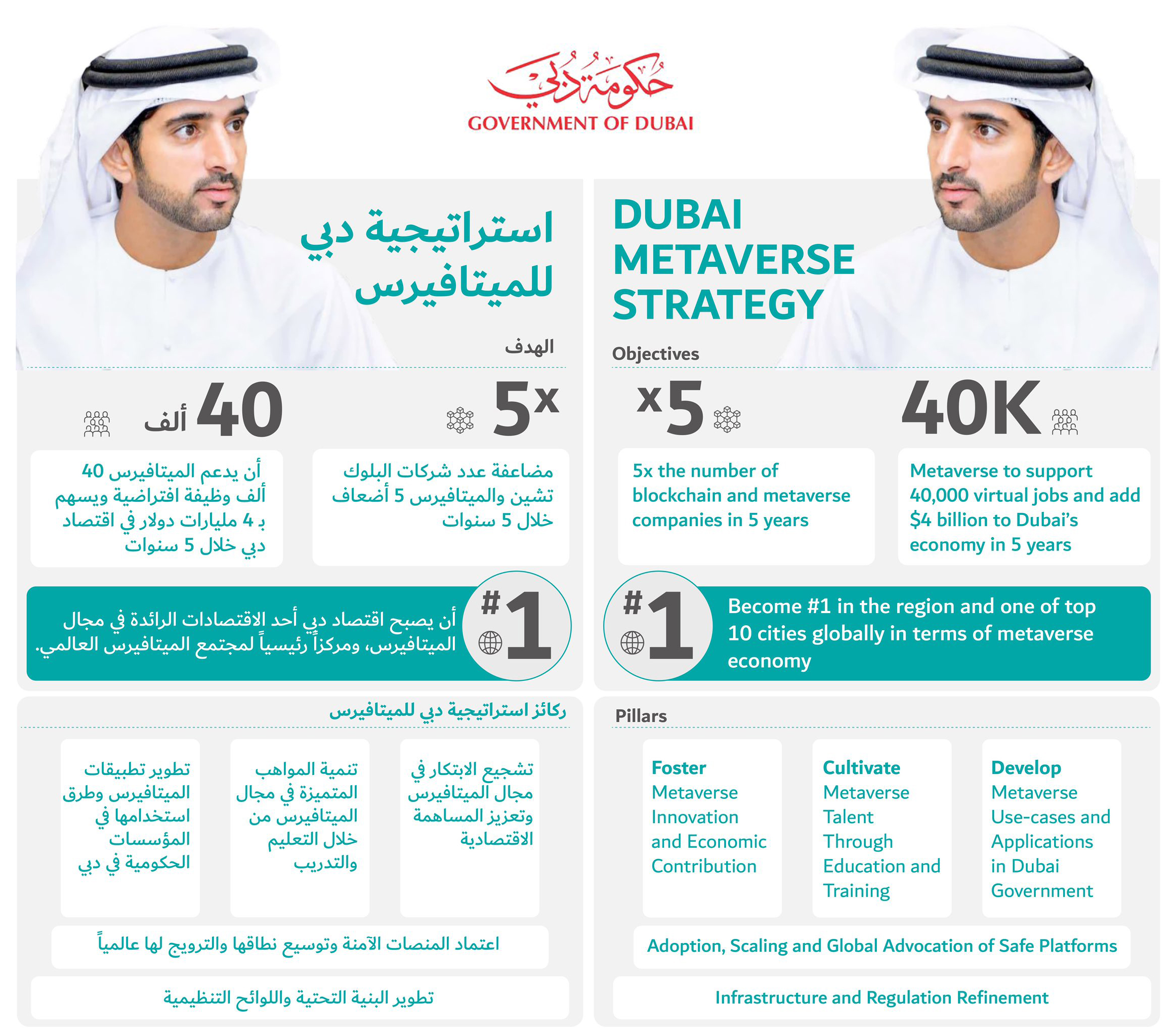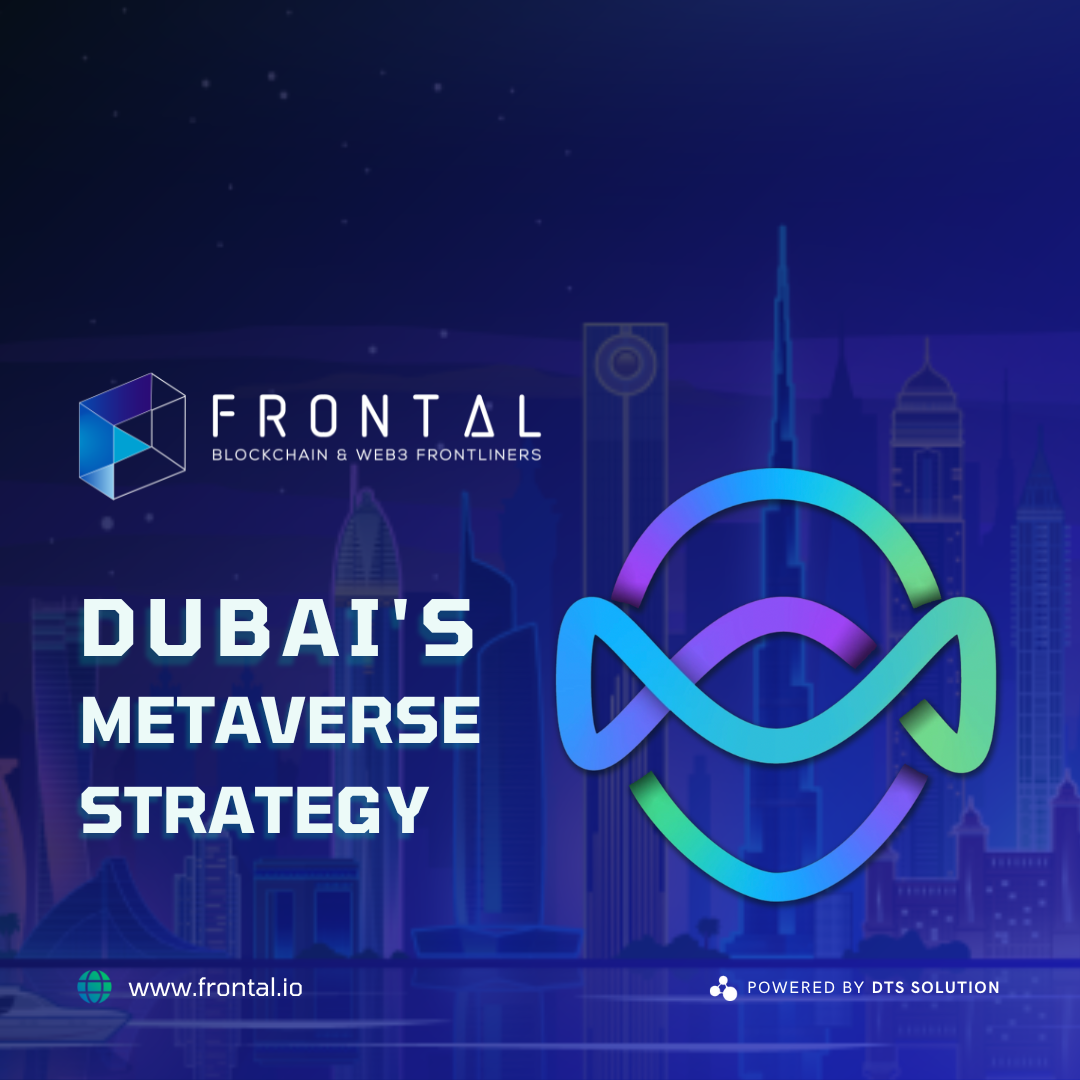Dubai has launched a metaverse strategy on 18th July 2022
Following H.H. Sheikh Mohammed bin Rashid’s footsteps, H.H. Sheikh Hamdan bin Mohammed launches Dubai’s Metaverse Strategy.
“With the early adoption of metaverse technology, Dubai seeks to become one of the top 10 metaverse economies and a global frontrunner in adopting digital solutions. This falls in line with @HHShkMohd’s vision for the future of Dubai. – Hamdan bin Mohammad tweeted.
What is the objective of this “Metaverse Strategy”?
Dubai Metaverse Strategy is in line with the objectives of the UAE AI Strategy to enhance the country’s status as one of the world’s leading countries in futuristic sectors by investing in new initiatives and empowering talent to drive digital transformation and the adoption of future technologies.
It aims to foster innovation, enhance the metaverse’s economic contributions through R&D collaborations, and promote advanced ecosystems utilizing accelerators and incubators that attract companies and projects to Dubai.
The ultimate aim of the Dubai Metaverse Strategy is to position Dubai at the forefront of the Metaverse economy in the region, and within the top ten Metaverse economies in the world.
Metaverse technology to add $4 billion to Dubai economy, support 42,000 virtual jobs by 2030

According to his tweet, the Dubai Metaverse strategy is expected to add five times more blockchain and metaverse enterprises in the next five years.
Currently, there are 1,000 blockchain and metaverse entities in Dubai, with the goal of reaching 5,000 by 2027.
“The strategy will also add 40,000 new jobs in the virtual world and bring in $4 billion to Dubai’s economy in the next 5 years,” Hamdan bin Mohammed stated.
The Dubai Metaverse Strategy will foster metaverse innovation as well as government use of the metaverse while expanding the talented workforce.
As a result of this strategy, Dubai hopes to rank among the top ten in the world in this sector.
Key Pillars
The strategy’s key pillars focus on extended reality (which blends the physical and virtual worlds), augmented reality, virtual reality, mixed reality, and digital twins (a virtual representation of an object or system). The strategy aims at leveraging real-time data, using machine learning and IoT, and employing AI simulation and blockchain to enhance the human thinking processes.
Data, network, cloud, and edge computing are technology pillars of the metaverse strategy that focus on real-world data that is obtained, validated, stored, processed, and managed. Other pillars include promoting the full deployment of 5G networks to enable edge computing and provide on-demand computer system resources. Edge computing allows data to be collected, stored, and processed locally via smart devices and local networks instead of the cloud.
Where is Metaverse headed?
Analysts estimate that the metaverse will contribute up to US$5 trillion to the global economy by 2030. The market value of NFTs is expected to reach $80 billion, while consumer spending on in-game purchases is reckoned to reach US$75 billion by 2025.
Recent studies show that the daily active users on Roblox, one of the leading global metaverse communities, has increased to 55 million. At the same time, 59 percent of global consumers are keen to transition at least one of their everyday activities to the metaverse.

